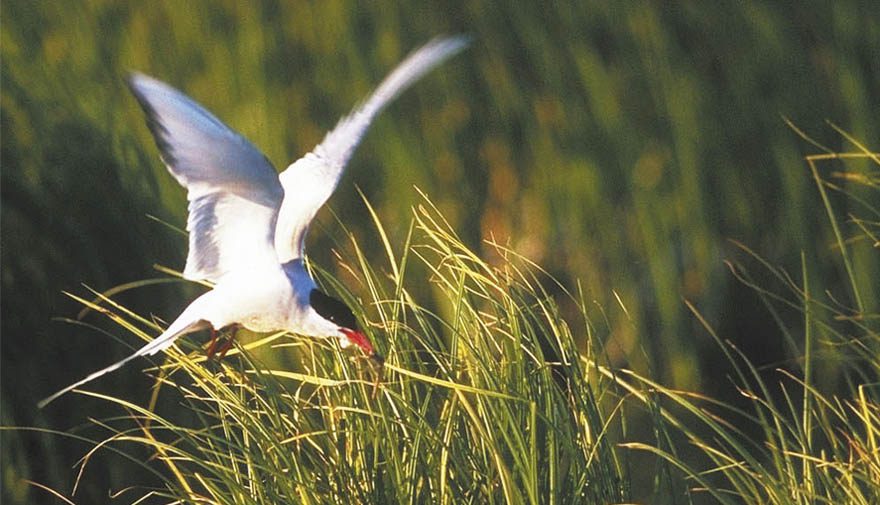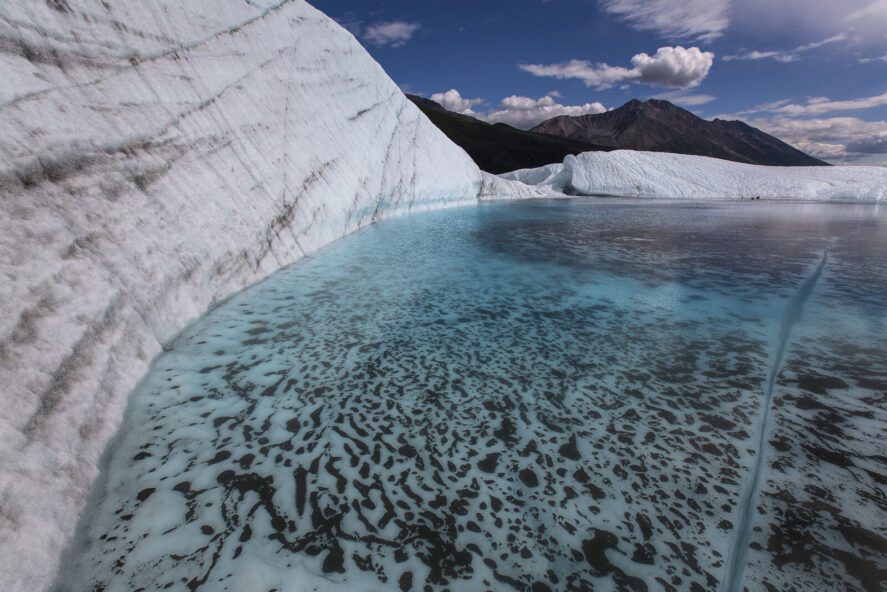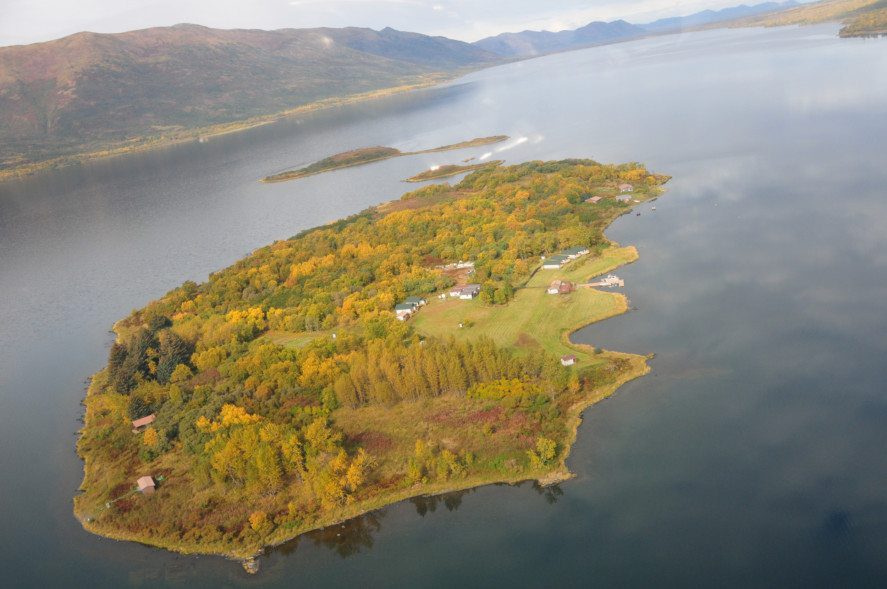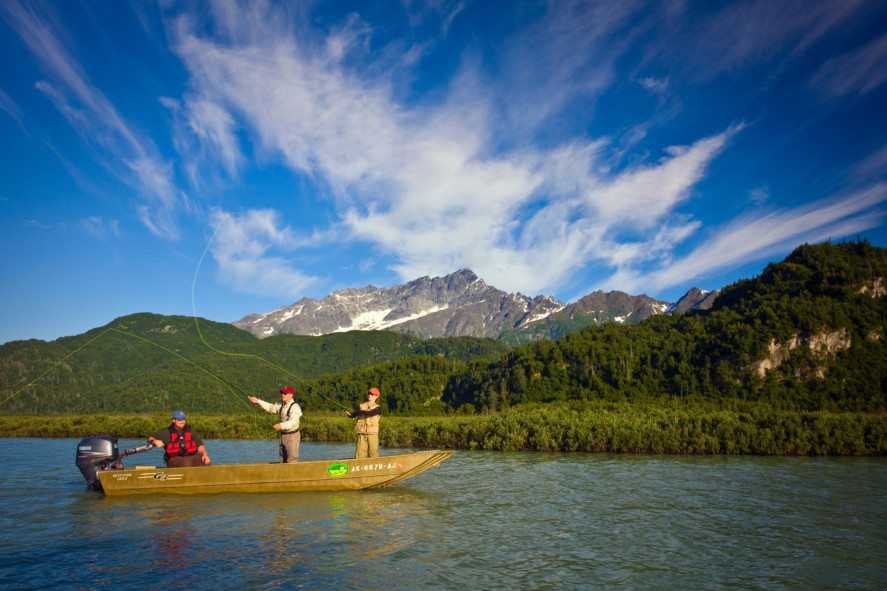Alaska is renowned for its mystique, from its remote forests and rugged mountainous scenery to its glacier-carved valleys, rainforests and tundra. And its waterways span the gamut – from icy straights to seacoast tidepools to wild and scenic rivers. And while these land and marine environments are both impressive and inspiring for visitors and residents alike, the true magic of Alaska’s natural legacies lie in the state’s diverse and eclectic ecosystems, a tapestry of subtle but equally incredible biology, geology and botany. In addition to their beauty, these rich landscapes provide homes and sustenance for Alaska’s wide range of wildlife and marine animals.

Portage Pass Hiking near Whittier in Alaska (Source: JodyO.Photos – Visit Anchorage)
Here is the lineup of Alaska’s ecosystems that will hopefully inspire you to come visit them to explore and learn about their many features – past, present and future.
Fields of Colorful Tundra
Though its swampy makeup sometimes makes it difficult for human travel, the tundra is Alaska’s dense, bumpy, vibrant and swampy “carpet”, covering vast, open expanses with low-lying vegetation including hardy shrubs and delightful wildflowers and creating a mosaic of colors and insect life. Tundra is especially prevalent in Alaska’s Interior and Arctic regions. Caribou and muskoxen roam in fields of tundra, while multiple bird species, including the iconic loon, flies over them. And the tundra also attracts lots of insects, a lucky feast for birds both local and migrating species.

A guided hike across the tundra in Denali National Park.
Majestic Mountain Ranges and Forested Hills
Alaska boasts some of the highest peaks in North America, including Denali, making them a rugged playground for climbers, skiers and thrill-seekers, and a breathtaking destination for travelers and sightseers. The most popular mountain areas for visitors are Denali National Park, Wrangell-St. Elias National Park, the Brooks Range and the Chugach Mountains surrounding Anchorage and beyond. From jagged peaks to family friendly hikes on forested trails, Alaska’s mountains and wooded forests offer memorable views and rich wildlife habitat. Gaze, high enough, and you can catch sight of Dall sheep and mountain goats nimbly navigating rocky cliffs, or marmots scrambling along the alpine flora and fauna.

View of Denali in Alaska.
Wetland Ecosystems
Alaska’s wetlands, from muddy flats to lush marshes, teem with wildlife from croaking frogs to serene swans. These areas are critical habitats for a wide range of flora and fauna. For birdwatchers with binoculars, the wetlands of Anchorage, the Kenai Peninsula, Southeast Alaska and the Yukon Delta are where they will be wowed by many species of waterfowl. The most popular wetland areas have decks and viewing areas, but if you plan to explore further, don’t forget to pack your waterproof hiking boots or waders.

Arctic Tern
Taiga: Subarctic Forests
The taiga, a forest of cone-producing trees in the subarctic region, lies between the tundra to the north and temperate forests to the south. Towering taiga, especially spruce trees, spread across the state and dominate the Interior Region in Alaska, including areas around Fairbanks and Denali National Park. These stretches are home to wildlife including moose, bears, and beavers, who love the taiga’s rugged, rich and secluded terrains. If you decide to take a stroll in the woods in these areas, listen for woodpeckers and migratory songbirds, and keep an eye out for the elusive lynx.

The Alaska Railroad near Denali in Autumn (Source: Roger Bath)
Glaciated Slopes
Alaska is home to some of the world’s over 100,000 glaciers, including some of the most awe-inspiring, carving valleys across mountain ranges and sculpting the landscape with their immense mass and power. Glacial ecosystems showcase a unique blend of ice, rock, and life in special places like Glacier Bay National Park, Kenai Fjords National Park, and the stunning Prince William Sound. Each glacier-rich region offers glacier cruises which get you right up close to the glaciers’ thrilling sights and sounds as the ice sheets calve into the waters below. And you can hike out on to many glaciers (Matanuska Glacier), up to (Exit Glacier) or near (Mendenhall Glacier) to experience firsthand some of the state’s most popular glaciated landmarks. If you choose a glacier cruise, keep an eye out for seals among the ice floes, sea lions, and the occasional glimpse of majestic humpback whales navigating the glacier fed waters.

Pool on Root Glacier in Wrangell-St. Elias National Park in Alaska (Source: NPS)
Freshwater-Saltwater Estuaries
These transitional ecosystems where freshwater meets the salty sea create a unique habitat that are oases of biodiversity and where wildlife can range from majestic sandhill cranes to curious sea otters. Estuaries are amazing places to explore, especially along Alaska’s seacoast areas, on Kodiak Island and in the Copper River Delta. Migratory waterfowl are especially fond of these areas.

Camp Island on Karluk Lake Kodiak.
Seacoast Corridors and Tidepools
Alaska’s coastlines can be long and lovely, fierce and far-reaching, tranquil and treacherous. When Alaska’s wild lands meet up with untamed ocean and bay waters, this creates a dynamic and visually stunning seacoast ecosystem. The coastal regions of the Inside Passage and Kenai Fjords are world-renowned, and the Kenai Peninsula also is known for its spectacular views from its coastlines. But just about any Alaska coastline, in the right weather conditions, provide a bounty of beachcombing discovery and phenomenal photography. Homer, in particular, is a standout. You’ll be treated to coastal strolls with saltwater air and wildlife viewing, eagles and puffins in the air, otters in the water, mountains, islands and even volcanoes in the distance, and waves lapping or crashing along the shore. But a word of caution… Alaska’s always unpredictable weather and quick changing tides can make coastal strolls wet, cold and wind-whipped trials. So dress and explore accordingly.

Kenai Fjords Glacier Lodge, Pedersen Glacier.
Alaska’s seacoast corridors also host many tidepool ecosystems. At low tide, Alaska’s rocky shorelines reveal intricate tidal pools, miniature marine worlds filled with an array of fascinating life, from sea stars and anemones to hermit crabs and other intertidal inhabitants. The tidal zones within the Kenai Peninsula, Prince William Sound and the islands around Kodiak are particularly popular places to experience these microcosmic wonders.
Freshwater Ponds and Lakes
Alaska is dotted with a seemingly unlimited number of ponds and lakes – around 3 million lakes, to be specific! They all add a chance to reflect to any visitor’s travel experience, surrounded by peaceful vistas full of mountains, forests and other wilderness landscapes. You can get pretty active in these areas as well with lots of fishing, birdwatching, canoeing and campsites to be found in these areas! These bodies of water, large and small, all play crucial roles in supporting Alaska’s diverse aquatic life and wildlife. Alaska’s Southcentral region, Mat-Su Borough, Kenai Peninsula and Interior are particularly rich in their populations of pristine ponds and serene settings hosting diverse outdoor activities.

Fishing for salmon on Big River Lakes from Redoubt Bay Lodge.
Alaska many and diverse ecosystems, with their natural beauty and wildlife and birdlife inhabitants, are a major draw for visitors worldwide. They are a natural and scenic backdrop to the state’s unique history and culture and contribute to Alaska’s captivating allure. From the towering Taiga to the surprising tidepools, grand glaciers and memorable mountains, each of Alaska’s landscapes and habitats are something to behold and explore in person. So, pack your bags and curiosity to embark on a journey to discover, learn about and explore Alaska’s extraordinary ecosystems.
